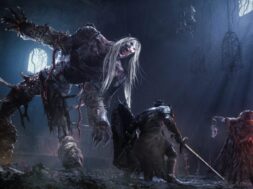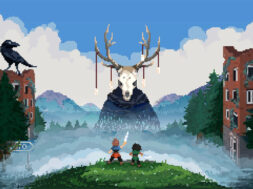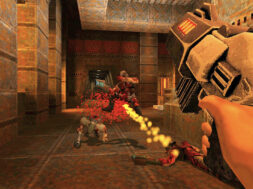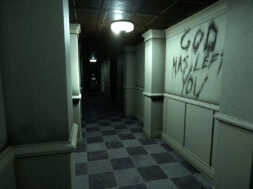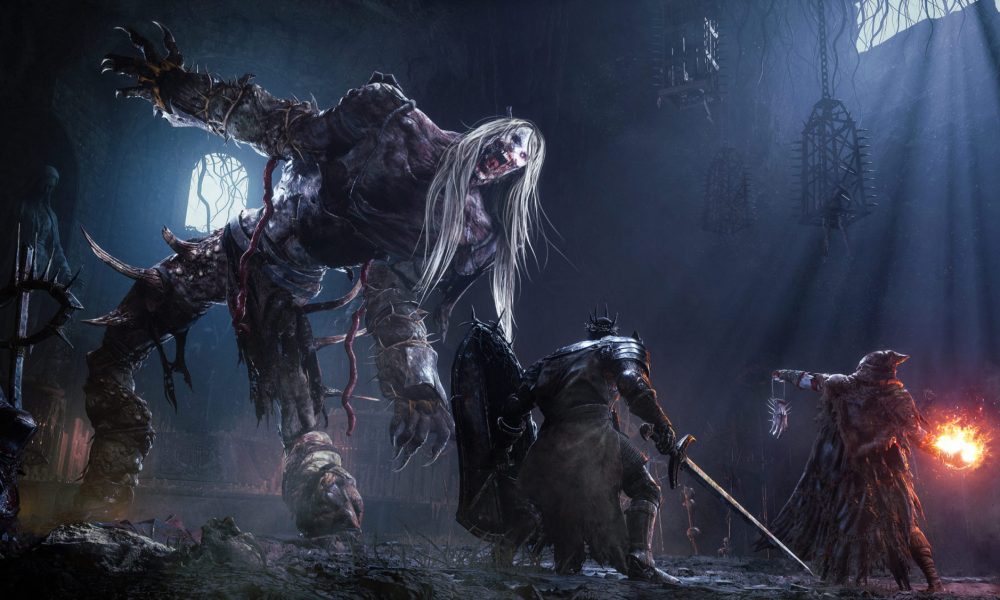
The Soulslike formula is one of the most prescriptive in all of gaming, with the kind of exacting standards that you normally don’t see anywhere else outside of dog conformation shows. Indeed, while every genre under the sun has its own predictable trappings and recurring tropes, the specificity of conventions here is insane.
At the very least, titles falling under the Soulslike umbrella must have the same notoriously punishing difficulty, hands-off approach to exploration, stamina-based combat, and idiosyncratic checkpointing, but the commonalities often run even deeper. Beyond those broad strokes, you can also expect to find: cryptic lore that’s mainly confined to item descriptions; a multiplayer system that revolves around dichotomous “summons” & “invasions”; and unhinged NPCs who all have an alarming tendency to burst into fits of mad laughter.
Given that the recipe is so precise then — and that its components are now so quantifiable — it can be fun to try and spot the subtle differences whenever a newcomer throws their hat into the ring. One of my favourite things to be on the lookout for, in particular, is when developers take a punt at renaming all of the staple elements, knowing full well that we’re just going to refer to them by their original Dark Souls nomenclature anyway.
Attempting to get me to learn a whole new glossary of terms is utterly futile because, no matter what you label your game’s safe havens — whether they’re “Sites of Grace”, “Med Bays” or “Stargazers” — I’m going to persist in calling them bonfires until the entropic heat death of the universe. As far as I am concerned, if it looks like a bonfire, acts like a bonfire and glows like a bonfire, then it’s a damn bonfire!
Such was my thought process when questing through Hexworks’ new Lords of the Fallen reboot. As I gradually came to grips with the title’s mechanics and obscure lingo, I would be mentally translating everything back into more familiar Dark Souls parlance, so that I didn’t get overwhelmed. There’s only so much room in my brain for this fantasy gobbledygook after all.
With that said, here’s a quick cheat sheet to help get you started:
First of all, the ever-important bonfires have been replaced here with the “vestiges” of slain heroes, so you’ll need to keep your eyes peeled for those grave sites if you want to upgrade your character. Meanwhile, in place of resins you will be using “salts” to apply elemental damage to weapons, rusted coins have been swapped out for “lucky paws”, “moths” perform the same function as homeward bones, the “sanguinarix crucifix” stands if for your replenishable estus flask, and “deralium nuggets” (rather than Titanite) are used for upgrading gear. Hell, the game even has its own version of Mimics!
Yet if that makes it sound like I’m down on Lords of the Fallen, rest assured that nothing could be further from the truth. Because while this offering hardly reinvents the wheel and does tick a lot of those generic boxes, it absolutely masters the formula. Although it may be tantamount to blasphemy, I’d even argue that Hexworks has managed to outdo the reigning champs over at FromSoftware in certain respects.
An Epic (And Confounding) Adventure
In keeping with Soulslike tradition, the plot of Lords of the Fallen is about as clear as mud.
Whenever you converse with friendly NPCs — and they start rambling on about the deeds of hallowed sentinels, the history of a group known as the dark crusaders, the tyrannical rhogar scourge, and the edicts of some radiant church that may or may not be a force for good — you’ll feel like you’ve accidentally tuned into a convoluted fantasy show that’s halfway through its run. It’s not like there’s even any homework that you could do to fill in the gaps, because while the title does loosely serve as a requel to its 2014 namesake, their two stories are set aeons apart and barely connect.
However, I’d argue that that sense of mystery is a very deliberate part of the experience and that you’re meant to feel a bit lost. If you are truly dead-set on piecing it all together, then you can of course bone up on the lore by scrutinising what little flavour text there is, and squeezing every last morsel from the game’s dialogue exchanges. Honestly, though, you’d be better off just going with the flow and surrendering to the weirdness.
All you really need to know is that the quasi-medieval land of Mournstead is on the brink of collapse. Eldritch demons and religious zealots are engaged in an eternal war, and you’re caught right in the middle. As a fabled “lamp bearer” (who can traverse the realms of both the living and the dead using a magic lantern) everyone wants a piece of you, seeing as it’s apparently your destiny to either prevent the coming calamity or to hasten judgment day’s imminent arrival.
Regardless of what stance you end up taking, you’ll need to embark on a perilous quest to reach five holy beacons, upon which the fate of the world supposedly rests. Of course, what this actually means in practical terms is that you’re gonna be fighting all manner of grotesque aberrations, ancient monstrosities, and towering dudes in massive suits of armour. As per Soulslike tradition.
Bringing the Pain
Action RPGs obviously live and die by their combat. The team at Hexworks understood this when it came to fine-tuning their latest release, as they’ve polished every single mechanic to sheer perfection.
Working from the assumption that “if it ain’t broke, don’t fix it”, they’ve stuck to the FromSoftware template in most respects. Dark Souls vets will feel especially at home, given that the default button mappings and interfaces have effectively been lifted wholesale from those classics.
The general rules of engagement are mostly kept the same as well; with an emphasis on parrying, dodge rolling, stamina conservation, maintaining your poise, inflicting status build-ups, as well as deciding when it’s prudent to wield both a sword & a shield, and when it’d be smarter to brazenly two-hand your weapon instead. It’s pretty standard stuff, yet incredibly refined in this instance.
Speaking of which, encounters in Lords of the Fallen are thrillingly high-stakes. Trading blows feels weighty and responsive, it’s imperative that you strategize at all times (without resorting to mindless button mashing), and one wrong move could potentially spell disaster. The addition of the umbral lamp also introduces a nice wrinkle to proceedings, but we’ll return to that remarkable gimmick later on.
Having said all of that, I really appreciated how there was a distinct lack of unfair bullshit here. Don’t get me wrong, gank fights can be extremely tough and the formidable bosses won’t go down easy, still, whenever I lost a scrap it legitimately felt like it was my own fault. Unlike with certain other titles in this genre, it was never a case of me falling victim to unavoidable blows, fickle RNG, stunlocking animations or projectiles that clipped through walls. Either I’d missed a heavily telegraphed attack or just bitten off more than I could chew. It’s very well-balanced in that sense.
Roll With The Changes
Anyway, the point is that if you like this type of gameplay then you are going to fall head over heels for Lords of the Fallen. And, honestly, even genre sceptics might be won over by some of the clever tweaks the developers have implemented.
One thing I personally loved was how your throwables are instantly restocked upon unwinding at a vestige. Knowing that those items can never be fully depleted grants you permission to go hog wild and use them far more liberally than you otherwise would.
Indeed, I had a ton of fun experimenting with all the different javelins, grenades and explosive powders at my fingertips, because I wasn’t worried about conserving them for a later bout. In fact, the poison bombs ended up becoming an integral part of my build after a while, as I’d cunningly lure hordes of enemies into a kill box and then douse them in a toxic vapour that gradually chipped away at their health bars.
On a related note, I was impressed by how versatile this title is when it comes to letting you customise your playstyle. Any given approach is viable: from ranged sorcery to more cautious swordplay and the duel-wielding of giant hammers. If you properly invest in the relevant stats, equip the appropriate rings and think carefully about which runes you want to use, then you’re guaranteed to find an approach that suits you.
However, should you still find the challenge to be insurmountable then there are a few handy lifelines at your disposal. For example, there’s a friendly NPC stationed outside of almost every single boss gate, and you can always turn to the online co-op as well if you’re struggling. Not to mention, there’s no limit imposed on how many times you can enlist the help of others, as summoning doesn’t expend any kind of finite resource in Lords of the Fallen (thank God!)
Furthermore, the innovative “vestige seed” mechanic affords you some control over how your checkpoints are distributed. In a nutshell, once you start to feel like you’ve strayed too far from the nearest safe zone, you can plant down a special root (albeit only in locations where the soil is rich enough). This will then grow into a fully-functioning vestige, from which you do all the important stuff like warping to other regions, upgrading your character and activating multiplayer features.
It’s such a deceptively simple idea that ends up having major ramifications on the way you progress. Case in point, you could decide to plant a vestige just before a bothersome fight; thereby enabling you to keep trying it again and again, without having to repeat the arduous journey over. Or, alternatively, you could establish a checkpoint at a fork in the road so that you can then conveniently double back on yourself and test out both paths. The system opens up so many possibilities like this!
Of course, there are inevitably restrictions on how many of these pit-stops you can have active at once (as well as the number of seeds that are up for grabs in the first place) but that only forces you to be more tactical in your green-fingered decision-making. Fortunately, the level design is so tight here that, even if you do misjudge the placement of a checkpoint, it’s never that big of a deal. After all, there’s always bound to be some ingenious shortcut that you can utilise later on to bypass hostiles and get where you need to be.
On that note, finally making it to a new checkpoint in Lords of the Fallen — often by the skin of your teeth — is one of the most cathartic and satisfying moments that you’ll have in any AAA release. Indeed, the endorphin rush that accompanies it never once diminished throughout my entire playthrough and I felt a genuine sense of achievement each time.
A World of Gods and Monsters
Another area where Hexworks went hard is with their outstanding art-design. While the actual graphics themselves might not be photoreal, Lords of the Fallen is no slouch in the visual department either and has certainly got it where it counts!
The world is dripping with gothic atmosphere and miasma; inflecting everything from its arresting environments to the phenomenal bestiary. In fact, I’d go so far as to claim that some of my favourite video game foes from recent years can all be found lurking in the gloomiest crevices of Mournstead.
One such highlight is the “Womb of Despair”; a pregnant husk that’s simultaneously horrifying to behold and yet quite beautiful (in a fucked up kind of way). Distinguished by its elongated proportions, extra limbs that are used to protect its swollen belly, and ornate butterfly wings; this elegant creature looks like it could have been ripped straight from a Guillermo del Toro production.
Then there’s the “Arden Penitent” — a hulking behemoth whose face is obscured by a spiked cage and who has chains wrapped around his body, for use in self-flagellation rituals — and the imposing “Proselyte” — a skeletal warrior with gaunt features, piercing crimson eyes, festering boils and oversized nails hammered into his skull.
Admittedly, the enemy variety does start to dip in the campaign’s middle chunk (with the mage and bog-standard zombie types outstaying their welcome). Yet just when you start to think that you’ve seen everything there is to see, some brand new abomination crawls out of the woodwork to thoroughly dissuade you of that notion.
Elsewhere, other standouts include the “Mendacious Visage” (a walking Easter Island head that opens itself up to reveal something hideous within), “The Congregator of Flesh” (a writhing mound of corpses that have somehow been lumped together) and the “Shuja Strider” (a creepy little swamp dweller fastened to a pair of stilts). I could go on, as there’s no shortage of these imaginative freaks for you to meet, but it would be a disservice to spoil them all.
The macabre creativity extends to the game’s environments as well. There is some connective tissue bridging the diverse lands together— in the form of oppressive religious motifs and a pervasive feeling of decay — yet for the most part everywhere has its own distinct vibe.
Across the many, many hours that it takes to complete Lords of the Fallen, you’ll be trekking from the treacherous heights of windswept canyons to the murky depths of polluted quagmires. Along the way, you’ll also stop by fortified keeps, frigid glaciers, holy sites and towns that have been put to the torch. There’s even a poison swamp that you probably won’t hate!
In addition to their striking aesthetics, no two biomes play in exactly the same way either. One might have a dizzying sense of verticality for instance (as you descend a cliff face by jumping on precarious platforms and cutting through a network of caves), while another takes the form of a comparatively linear sprint down a pilgrim’s road.
They’re all densely packed with content too, featuring unique mini-bosses, interesting mechanics, secrets to uncover and unseen paths that windingly lead to optional dungeons. As such, you can feasibly explore somewhere for hours upon hours and still only scratch the surface of what it has to offer.
A Matter of Life and Death
On the subject of hidden depths, there is an entire second map in Lords of the Fallen that is invisible to the naked eye. Dubbed “Umbral”, this is essentially an underworld that sits beneath the realm of the living, mirroring it in many ways, albeit with a few key differences.
While the basic layout and geography are more or less duplicated, this alternate dimension is cold, desolate and populated by some of the nastiest beasties conceivable. Think of it a bit like the Upside Down from Stranger Things and you’re in the right ballpark.
As the lamp bearer, you have the rare ability to peer into the Umbral at any given time by holding up your lantern and literally piercing the veil between worlds. Anything that is subsequently bathed in the blue glow of your light will then shift into its dexter form, allowing you to reach hitherto inaccessible places.
For instance, a tunnel could be blocked in the land of the living, but that pesky obstruction might not exist at all in Umbral. Likewise, raging fires can be extinguished, flooded areas rendered dry, and impassable ravines crossed if you use the lamp judiciously. In other words, it basically allows you to cherry-pick which parts of the world you want to be Umbral and which parts you want to be “normal”.
Alas, you will eventually have to commit to a permanent realm shift at some point, as that’s often the only way of progressing. Said transition can either be triggered manually or by you kicking the bucket. Yet, no matter how you get there, the end result is always the same; you will be stranded in the spirit world for good until you can find a revivifying altar.
There’s way more to the Umbral system than I could ever possibly hope to describe in a solitary review but, suffice it to say, it’s a complete revelation. Without it, Lords of the Fallen would be a competently put-together Dark Souls clone and not much else. However, its inclusion fundamentally alters every hoary mechanic in a way that makes this feel like a bona fide evolution of the genre.
The effects are most obviously felt in the exploration side of things — as this dual-world gimmick creates opportunities for inventive level design, clever environmental puzzles and devious secrets — but its influence is truly all-encompassing. As another great example, bosses will sometimes have different phases and vulnerabilities in Umbral that you can use to your advantage. Meanwhile, basic enemies can be shielded by parasitic organisms that are only vulnerable in the netherworld and you can gain deeper story insights by using the lantern to glimpse into Mournstead’s unsavoury past.
To an extent, it even makes you reassess the concept of dying, given that it no longer represents the definitive end of a run. In some cases, you may deliberately withhold from healing because you know that you’ve got to enter Umbral soon anyway and might as well keep yourself stocked up on supplies for that considerably more hostile environment.
Again, there’s no way I could do justice to how transformative this mechanic is without simply listing all of its applications (an idea that I toyed with in an earlier draft, before I decided to be merciful to my poor editor). So, to put it more sufficiently, even thirty hours in I am still discovering surprising new uses for the Umbral system and it never gets old.
All in all, Lords of the Fallen is not just another lazy pretender to FromSoftware’s throne. Granted, the developers have blatantly studied those Soulsbourne games, figured out what made them tick, and pinched a few concepts. But they’ve also added a crucial flavouring of their own that helps them stand out from the crowd.
Published by CI Games, Lords of the Fallen was released on PS5, Xbox Series X|S and PC on October 13th. Review code provided by publisher.
